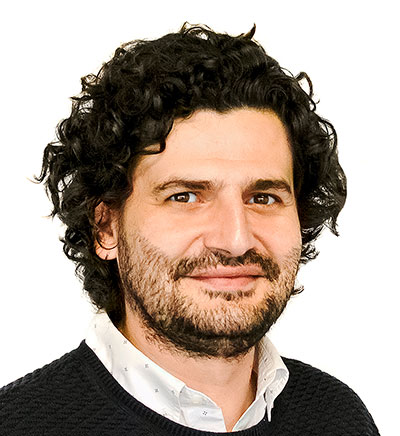
The Mexican Tourism Industry: Success Stories and Model Changes
 By Daniel González | Senior Writer -
Fri, 01/24/2020 - 17:51
By Daniel González | Senior Writer -
Fri, 01/24/2020 - 17:51
In 1949, President Miguel Alemán made the decision to draft the first Federal Law on Tourism in Mexico. Since then, tourism has become one of the most strategic industries in the country. According to INEGI, tourism represents 8.7 percent of the country’s GDP; in other words, in just over half a century of development, it has become one of Mexico’s most dynamic industries. Despite success stories over the years including destinations such as Acapulco, Puerto Vallarta, Cancun and the Riviera Maya, various specialists have recently observed signs of exhaustion from the Mexican tourism model.
The overexploitation of some destinations, international competition, the growth of the region’s emerging economies, digitalization and internal problems including insecurity and violence have led Mexico to re-consider its tourism model. What is the objective? That tourism, which is key for the country and for the states where it is developed, continues to flourish. This assessment must consider the change in visitors’ profiles due to the economic development of countries such as India, China or Southeast Asian states, which have gone from being recipients to producers of tourists.
Minister of Tourism Miguel Torruco referred to these chaspnges during the International Tourism Fair (FITUR), currently taking place in Madrid, Spain. During one of the presentations, Torruco noted that in 2019 some 44.7 million tourists visited Mexico, 8.3 percent more than the previous year. As a result, the country received a total of US$24.8 billion, a jump of 10.2 percent on 2018 and representing an average expenditure per person of US$506.13.
This information is considered positive at the domestic level. Yet if compared with international data, it tells a different story. In 2019, Mexico dropped one position below Turkey in the world ranking for the number of international visitors it received, from 6th to 7th place. It also fell one place in the ranking for international currency receipts, from 16th to 17th place. “To improve the spend and the indicators of overnight stays it is necessary to offer more tourist attractions. Therefore, this year VisitMexico will be launched, the Pueblos Mágicos Program will be restructured, a Council on Tourism Diplomacy will be created, the ¨Knock on Doors¨ initiative will begin, we will promote at International Fairs, a new agreement to promote the Formula 1 will be signed and the Tianguis to be in Merida,” said Torruco during the conference in Madrid.
However, to make the Ministry of Tourism’s plans a reality, strong and sustainable investment is needed. The government's objective must be to increase spending amounts per tourist while maintaining a balance in the exploitation of resources; that is, not to resort to mass tourism to increase the amount of foreign currency received. Torruco added that ¨Mexico will receive US$15 billion in tourism investment over the next three years, which will mean the creation of 80,000 new jobs and 90,000 new hotel rooms”.
In this context, there are several objectives for the Mexican tourism industry, and achieving them will require close collaboration between the public and private sectors:
- Diversification. One of the great challenges of the Mexican tourism industry is to diversify its destinations. In recent decades, both national and international tourists have concentrated on destinations that have hardly changed since the Federal Law on Tourism was drafted. Mexico’s challenge is to take advantage of its cultural and natural potential to increase the amount of destinations. This will require close cooperation between the federal government and state governments.
- Infrastructure. Improving the country's connectivity, both externally and internally, will be key to achieving the objectives set by the current administration. The construction of a new airport in Mexico City and the opening of major international airports throughout the country are some of the objectives. In addition to these strategic projects, there is the Mayan Train, whose first phase, according to Rogelio Jiménez Pons, general director of FONATUR, will begin construction "between April and May". This first phase will connect the towns of Palenque, Chiapas, and Escárcega, Campeche.
- New travelers. A few months after taking office, Miguel Torruco explained the objective of his mandate: to increase the per-capita expenditure of tourists visiting the country. Therefore, the government's objective is to attract tourism from countries such as Japan, China and Australia, whose citizens tend to spend the most on holidays. The case of China is the most interesting for Mexico. In the Asian country there is a market of 124 million people who decide to spend the holidays abroad, spending an average of US$2,700 per person. However, the language barrier, the cancellation of direct flights between Mexico City and Shanghai, the departure of China Southern Airlines from the country and Hainan Airline’s decision to choose Panama as a gateway to Latin America, have complicated Mexico´s position. However, the first step has already been taken. In 2019 the Ministry of Tourism launched a plan to promote tourist sites. This plan was first launched in China.
- Insecurity and violence. Insecurity and violence have stopped tourism growth in Mexico. This is what Gerardo Herrera, academic at the Universidad Iberoamericana explained to Efe. “The perception of insecurity abroad, especially because of the US government’s tourism alerts, impact the decisions of tourists,” he said. “In tourist destinations, episodes of violence are few, but that perception exists.”
- Cultural identity and environmental protection. In an industry as competitive as tourism, cultural differentiation has become a key tool for growth, as well as adding value to the tourism experience, believe Miguel Torruco. “The countries that best preserve their environment and their historical, cultural and gastronomic identity will be those that win the global tourism battle in which borders will be defined by national idiosyncrasies,” he told an audience at FITUR. Mexico has 35 sites designated as UNESCO World Heritage Sites, making it the seventh country in the world in this category. In addition, Mexican cuisine has also been recognized by UNESCO, along with others such as Japanese, Mediterranean and French.
















